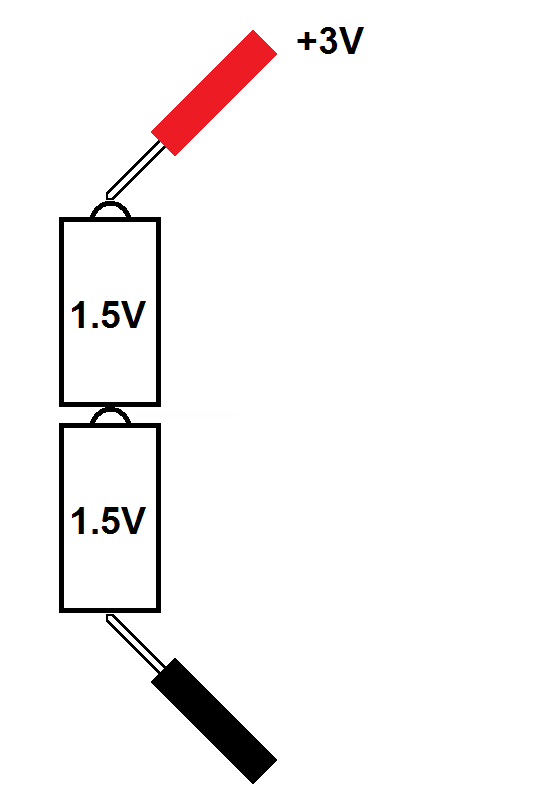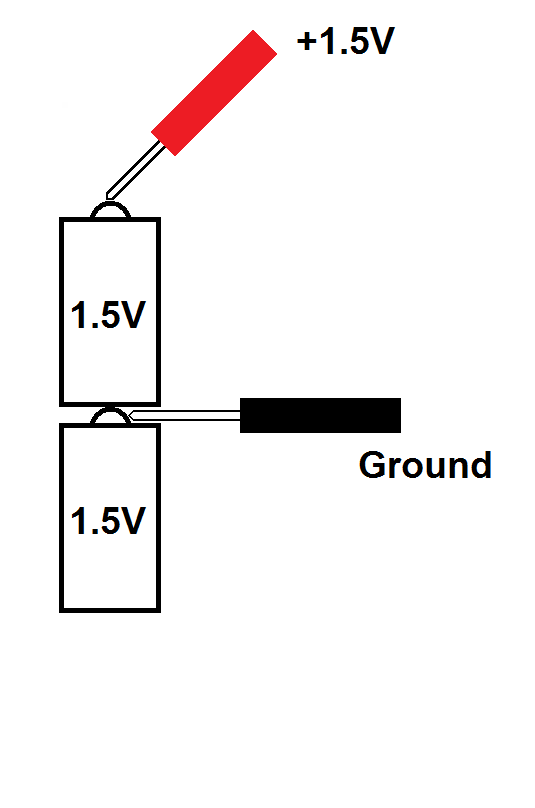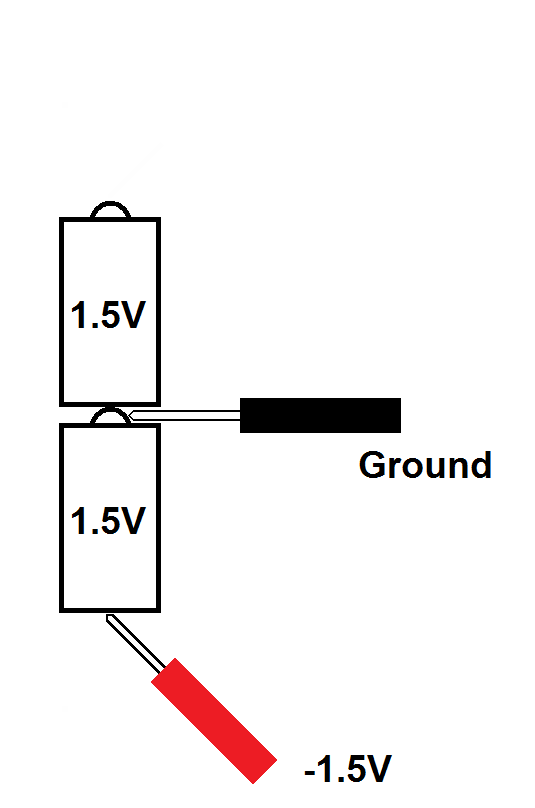| Vocademy |
Measuring Voltage
The concept of voltage has already been discussed in What is Voltage
above. Remember that voltage is like air pressure. When measuring
voltage, you are always measuring the difference between two voltages.
One voltage is meaningless unless compared to another voltage.
Voltage is measured by touching the probes of a voltmeter to the points of the electrical circuit where you want to determine the voltage differential. That's about all there is to it. The only issues are to be sure only to touch the points you want to measure (don't short out part of the circuit with the probes) and to observe polarity (especially with an analog meter).
Some circuits need both positive and negative voltages. In such circuits, two batteries are used to power the circuit. Ground is defined as where the two batteries meet. The following diagram shows two 1.5V batteries that are connected together. Notice that if the voltmeter is placed across both batteries, it will read the sum of the voltages, which is 3V. If the black probe is placed at the junction between the two batteries and the red probe is connected to the open positive terminal of the top battery, the volt-meter will read +1.5V (naturally, since you are just putting the probes across a 1.5-volt battery). If the red probe is moved to the open negative terminal, the voltmeter will read -1.5V (now you have the probes connected the “wrong” way to a 1.5-volt battery). All voltage measurements will be made with the black probe of the volt-meter connected to the junction of the batteries, again usually called "ground" (see What is ground (part 1) above.)
Voltage is measured by touching the probes of a voltmeter to the points of the electrical circuit where you want to determine the voltage differential. That's about all there is to it. The only issues are to be sure only to touch the points you want to measure (don't short out part of the circuit with the probes) and to observe polarity (especially with an analog meter).
Some circuits need both positive and negative voltages. In such circuits, two batteries are used to power the circuit. Ground is defined as where the two batteries meet. The following diagram shows two 1.5V batteries that are connected together. Notice that if the voltmeter is placed across both batteries, it will read the sum of the voltages, which is 3V. If the black probe is placed at the junction between the two batteries and the red probe is connected to the open positive terminal of the top battery, the volt-meter will read +1.5V (naturally, since you are just putting the probes across a 1.5-volt battery). If the red probe is moved to the open negative terminal, the voltmeter will read -1.5V (now you have the probes connected the “wrong” way to a 1.5-volt battery). All voltage measurements will be made with the black probe of the volt-meter connected to the junction of the batteries, again usually called "ground" (see What is ground (part 1) above.)
 |
 |
 |
| Measuring voltage across two batteries in series then measuring referenced to a ground the is at the junction of two batteries. |
||
A reference ground, such as created above may also be connected to the
box or frame that houses the electrical device, making it a chassis
ground. It may also be connected to a true earth ground.
Measuring Voltage
| Vocademy |
